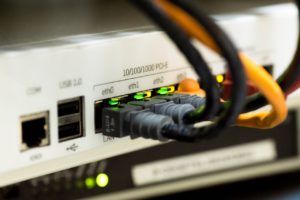Being a Managed service provider is a tough job. It takes endless hours of hard work, dedication and lots of patience. Add to that a complicated RMM software, and the poor IT guy is doomed! I’ve been to a lot of IT/MSP trade shows and seminars recently and have spoken to numerous MSPs. The one common pain I have heard about is how challenging it is to use RMM software due the fact that the solution was overly convoluted to use.
When doing research for RMM tools, the biggest struggle is finding the one solution that can includes the following features:
Is it SaaS based?
Most Managed Service providers have way too many devices to manage. On top of that, the headache of managing a server that runs the RMM platform is an overkill.
Many times there are situations where a certain Java/.NET dependency might break the RMM tool or a particular windows update kills the software. In addition, there are other hardware related issues with the disk running full or hard drive crashing on the RMM server. Most MSPs use an RMM solution to run their services and if this server goes down, it means their business is dead in the water! Lost time equals lost revenue.
Moving to SaaS based solution provides obvious advantages:
- Super-quick onboarding
- Less friction in getting everything up and running
- Zero maintenance.
Does it have Heterogeneous Device Support?
As we all know, the technology world is progressing very rapidly. There are a lot more devices that have entered the corporate networks, ranging from smartphones to tablets to smartwatches and the most recent – IoT devices which are expected to surge exponentially in the coming years. The increase of devices will require heterogeneous support for all these disparate types of devices. Windows typically uses WMI (Windows Media Instrumentation) while networking devices use SNMP (Simple Network Management Protocol), SNMP Traps, Syslog and traffic monitoring protocols like NetFlow. There are also VMware hosts using their proprietary API calls. If you look from a macro-level, there are other things like Domain records, websites which also need to be monitored. In addition, each of these device types will require different monitoring technologies. It will be the RMM solutions “job” to present this in easy to interpret dashboards and reports.
Ease of Use and Minimal Training Time
In this crazy world of technology with numerous trainings and certifications for every kind of hardware/software (CCNA, MSP etc.), it is overwhelming when you have to spend too much time learning a new RMM solution. In my research, MSP’s dread switching RMM platforms, even if they are unhappy with their current solution. Due to the many hours that need to be spent learning the new platform, this turns into non-billable time for the MSP which equals lost revenue. In addition, the MSP landscape is so dynamic, that IT staff come and go all the time and having to continuously train, takes more time away from building and growing the business.
Are there True Integrations?
All RMM platforms boast that they have many integration partners. The devil is in the details! We have all seen basic integrations between different vendors, but the ones that stand out, are the ones which are true in nature and that you can access almost every feature of the other vendor without having to leave the RMM platform. This leads to a true single-pane-of-glass experience which is what MSPs yearn for, to making their lives easier and more efficient.
Reporting?
This is one of the most important aspects of any RMM tool. When I talk about reporting, it is a two-fold feature. First, the RMM solution needs to have reports which are useful for the MSP to maintain and troubleshoot the customer network. For example: A report like, “Show me all devices from Customer A which have pending and failed patches”. Such a report in meant for internal consumption by the MSP and helps him solve issues.
Second, there are reports which are meant to be customer facing which are presentable with graphic representation of the customer network and cover things like patch status, backup summary, antivirus summary etc. These reports are more holistic in nature and are meant to prove the value the MSP has provided to his customer. They are usually sent out along with the monthly/quarterly invoice.
What about Pricing?
There are thousands of MSPs in the North America and thousands more worldwide. Each of them are at a different stage in terms of the number of devices they manage and their annual revenue. They range from one man shops who manage residential customers in their neighborhood to hundreds of employee shops who have operations spread around the world. The MSP size decided the revenue they make and how much they can afford to spend on the RMM solution.
RMM companies offer different pricing models ranging from no-contract to yearly contracts. In addition, some charge per technician who will use the product, while
This should give you enough pointers on what you should consider when choosing a remote monitoring and management solution. There is no RMM tool which provides a one-size-fits-all. The managed service provider has to use his due diligence to ascertain what will be the best fit for his budget and monitoring needs.
For more information about RMM software from NinjaMSP, go to: http://info.ninjamsp.com/acrbo-remote-monitoring-tool
- What To Look For When Researching RMM Solutions - September 13, 2016

